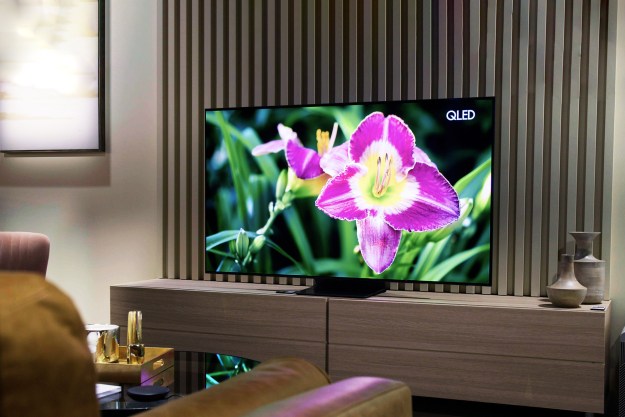“The NS-BRDVD3 from Insignia offers better-than average build quality and Netflix streaming capability at a very competitive price.”
- Good picture quality, Netflix streaming, simple to use, good value
- Slow/buggy remote control, lacks DTS-HD audio
Introduction
Best Buy’s house brand, Insignia claims to approach product design from a “consumer-driven” perspective. Ideally, as their products advance they should reflect the changing demands of the customer. The NS-BRDVD3 Blu-Ray player does boast some improvements on its predecessor and attempts to increase the bang-for-your-buck factor to help bolster the popularity of the Blu-Ray format. However, the competition at this price point is getting tougher which means the NS-BRDVD3’s missing features could be a deal breaker for some.
Out of the Box
This Insignia Blu-Ray player appears to have been manufactured and sold before its firmware’s time. Straight out of the box we find a flyer indicating that a firmware update will be necessary to take advantage of its Netflix streaming capabilities. In fact, a little internet research reveals that when this player first started selling at Best Buy stores in late September ’09, the firmware version that supported Netflix wasn’t yet available and caused some problems for early buyers. Fortunately, we did not experience the same frustration that was reported and managed to update the firmware in less than 2 minutes using the provided Ethernet connection.
 Features and Performance
Features and Performance
The NS-BRDVD3’s bread-and-butter price point might lead one to think that it has been made on the cheap. In fact, we are pleased to see that the player appears and feels reasonably well constructed. A 25 watt power supply adds heft to the case which holds up well under pressure. The disc transport tray is also more solid than others we’ve tested at this price-point.
The Insignia’s back panel is about what you would expect for a budget Blu-Ray player. In addition to the usual suspects is an RJ45 Ethernet port for network features. The front of the player is sparsely populated with only the essential buttons but does have a flip down panel that conceals a USB port for picture and music playback. This unit does not support DTS Master-HD audio as some other players in this category do and, though it stands to reason that not everyone benefits from DTS-Master HD, it is one of those features that we’d like to see adopted as a standard in Blu-Ray players.
Performance of the player was good. The NS-BRDVD3 boots up in a comparatively speedy 15 seconds and will load and start playing a Blu-Ray disc in about the same amount of time. This is a big improvement over prior year models from most manufacturers. The video quality was on par with other budget players. Both Blu-Ray discs and up-converted DVDs looked great. Most video anomalies were more easily detected on 50” and larger displays and, even then, not all that noticeable to the average viewer. While it may not get accolades from the videophiles, we think the average buyer will be pleased with the stunning resolution of Blu-Ray content.
The remote controls were often problematic. Though we had clear view of the player from our seated position, the player was often not responsive to remote control commands, requiring a restart of the player to restore functionality.
The real feather in the NS-BRDVD3’s cap is the quality of its Netflix interface. Unlike many other Netflix UI’s we’ve experienced that only let you browse a long list of movies in your instant queue, the Insignia player will let you sort based on recently viewed movies or favorites and includes some Netflix categories for TV shows, Movies and a host of other options. This more user-friendly interface is bound to increase the popularity of this instant service.
Conclusion
The NS-BRDVD3 from Insignia offers better-than average build quality and Netflix streaming capability at a very competitive price. If you don’t need Youtube, CinemaNow, Amazon movie or DTS decoding, this player from Insignia is a bargain.
Pros:
• Good picture quality
• Excellent Netflix streaming interface
• Simple and easy to use
• Good price to performance ratio
Cons:
• Slow/buggy remote control response
• Lacks DTS-HD Master audio support
Editors' Recommendations
- Best LG C3 deals: Get up to $1,000 off the popular OLED TV
- Sennheiser Momentum True Wireless 3 get Bluetooth multipoint and hi-res audio
- LG’s 42-inch LX3 OLED TV can bend when you want it to
- Best MP3 players: a great music streamer for everyone
- LG’s 2022 soundbars start at $400, pump out hi-res audio and 3D sound


 Features and Performance
Features and Performance


